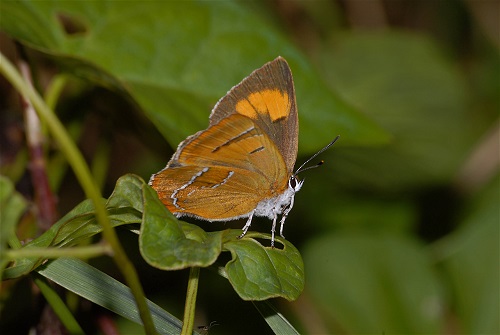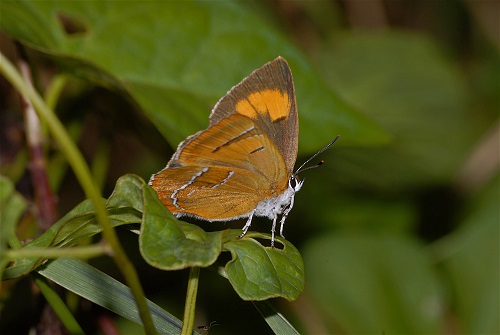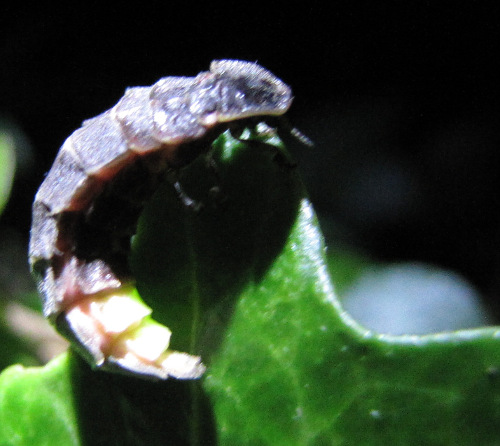Invertebrates
Invertebrates, which include bacteria, nematodes, molluscs and crustaceans, together with the fungi and simple plants form the engine room of the ecosystems on the farm. We know almost nothing about them. We have identified a few of the insects:

Brown Hairstreak Butterflies
Some of our blackthorn hedges and scrub areas are managed specifically for Brown Hairstreak Butterflies which lay their eggs on them, while we collect the dark blue sloes to make sloe gin. We are the best farm in Wales for Brown Hairstreaks and have made a 2.5 ha reserve especially for them.
Bees and Wasps
Plants need bees and we keep bee-hives and produce our own honey on the farm. There is a bee-keeping group locally who are willing to provide advice on this seemingly simple but actually quite technical country skill. We also have a very competent young man on the staff who is a capable bee keeper.
Both bees and wasps have struggled in recent years. There are many species of solitary bees and wasps and each have their own niches which are poorly understood. We would like to do more for them but we don’t know what their limiting factors are.
Glow-worms
Glow-worms (Lamprys noctiluca) are actually beetles and in June the females light up in the evening to attract the males. We have a very few on the farm, associated with old tracks. Sometimes we go several years without seeing them. What can we do to help them?
Ants
We have a few ant colonies on the farm, species unknown. These, along with so many invertebrate species, are indicators of old, undisturbed habitats. Of course there is a lot more to ants than just their nest, and to ‘re-wild’ ants is a challenge. You cannot just dig up an anthill and plonk it somewhere else. How can we think of re-wilding big predators when we cannot even help the ants?



